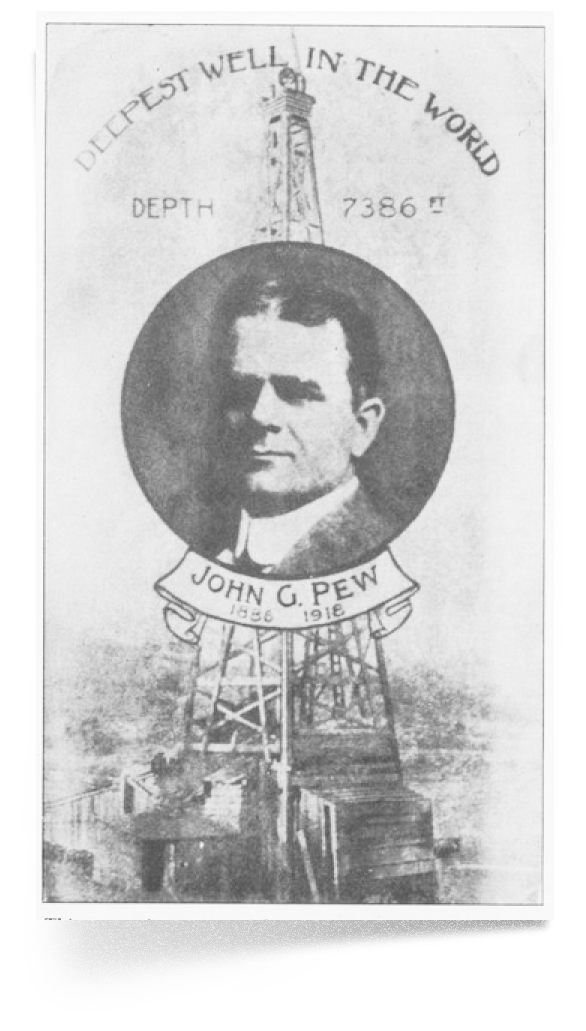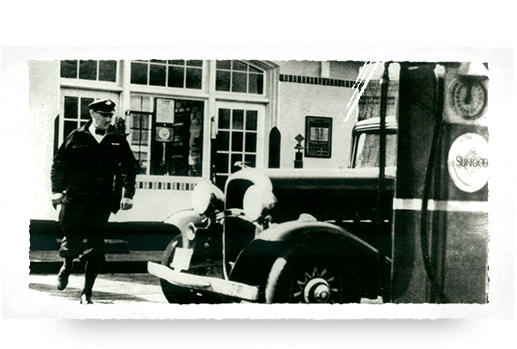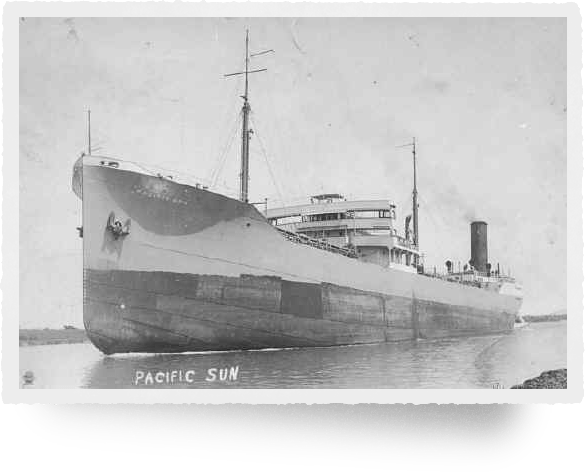Sunoco:
The history of a legendary brand
1886: Beginning
Workers in Chicago begin a strike that will lead to the introduction of an 8-hour workday; the Statue of Liberty is unveiled in New York; a Coca-Cola soft drink is created in Atlanta; and the first American newspaper in the Ukrainian language is published in Pennsylvania. Meanwhile, the transportation industry undergoes a true revolution: Karl Benz patents a three-wheeled vehicle with an internal combustion engine, and shortly after, Daimler and Maybach install an engine on a carriage, creating a four-wheeled, self-propelled vehicle – that is how the first automobiles in the world appear.
The same year, Joseph Newton Pew and Edward O. Emerson, partners in The Peoples Natural Gas Company, decide to expand their gas business to oil (since 1890 known as the Sun Oil Company) in Pittsburgh, PA. Within a few years, they will become one of the leading suppliers of crude oil in the region. This was the beginning of SUNOCO, which would become the largest fuel distributor in the United States.

Souvenir from 1918 – J. Pew and the inscription "Deepest well in the world. Depth 7386 feet"
1916: Expanding to new industries
As the oil company grew, its activities expanded into related services and subsidiaries. Thus, in 1916, the Sun Shipbuilding and Dry Dock Company was founded. The following year, it launched its first ship, just as the United States entered World War I. Its main products were tankers, but looking ahead, the company also built many other types of vessels over its 70-year history. The Sun Shipyard used welding instead of riveting to build ships, thus saving on steel - one of many technical innovations initiated by the company’s management.
1920s: First service station and listing on the stock exchange
Already owning a significant number of oil fields and refineries, in 1920 Sun opened its first service station in Ardmore, PA, and soon afterwards another one in Toledo, OH (today there are more than 5,000 of them). In 1925, the company went public, debuting on the New York Stock Exchange. In addition to shipbuilding and the gas station chain, Sun expanded its operations to other areas, and in 1929 it began manufacturing oilfield equipment consolidating its leadership position in the oil industry.

The first service station in Ardmore, PA
1937: Technological breakthrough
Innovations allow us to move forward - this has always been the guiding principle of the company’s management. In 1937, Sun launched the world's first large commercial catalytic cracking unit using Eugène Houdry's technology at its plant in Marcus Hook, PA. Compared to thermal cracking, catalytic cracking technology produces higher-quality fuel and significantly speeds up the process. This was a revolutionary event in the oil refining industry. Together with Eugène Houdry, Sun engineers took an active part in optimizing the process. The Marcus Hook facility is still in operation today and is used to refine fuel for racing cars. The plant has been recognized as a national historic landmark.
1940s: Mark in history
In 1941, Sun expanded its operations to the mining industry by establishing the Cordero Mining Company in Nevada to supply mercury for its motor oils. This metal proved to be vital to the US military in World War II. During the war, Sun participated in the emergency shipbuilding program launched by the US government and became a pioneer in the development and processing of aviation fuel and lubricants. During the war, the Sun Shipyard was the largest in the world and employed 35,000 workers. Later, during the Cold War, the company would become part of the US aerospace industry.
In 1948, the company's director, J. Howard Pew, along with his brother and two sisters, founded the Pew Charitable Trusts, a group of charitable foundations that still support social needs around the world. These are some of the numerous examples of how our activities are intertwined with the history of the country and the world.

Pacific Sun built at the Sun Shipyard in Chester, PA. Participated in World War II
1950s: Global expansion
In the 1950s, Sun began to expand internationally. In Canada, a 15,000-barrel-per-day refinery was launched. In Venezuela, starting in 1957, the Venezuelan Sun Oil Company had produced more than 1 billion barrels of oil from Lake Maracaibo until it ceased operations in 1975, when the Venezuelan government nationalized Sun's property. Today, the company has offices in 30 countries.
1956: Revolution in the fuel dispensing system
Sunoco stations offered as many as eight brands of special blended gasoline from their Dial A Grade pumps, including the highest-octane gasoline on the market, which was very popular among owners of muscle cars. A model of the pump is now on display at the Smithsonian.
In 1956, Sun revolutionized the oil industry by developing and launching an innovative Custom Blending Pump at its gas stations. It made it possible to dispense five grades of gasoline with different octane ratings from a single pump.


1960s: Sports victories
Since the 1960s, the Sunoco brand has been present in motorcycle and automotive competitions. For many years, it has been a sponsor of the legendary Roger Penske Racing Team and driver Mark Donohue, with whom it won the championship in 1968 and 1969, as well as the Indianapolis 500 in 1972.
In total, the company's sporting history includes 1300 brilliant victories in NASCAR racing alone, as well as 5 national and 59 individual records in the National Hot Rod Association (NHRA). For more than 50 years, we have been supplying the best teams around the world with high-quality fuels tailored to maximize the performance of their race cars.
1980s: Innovative fuel and further development
In 1983, the company once again made a breakthrough in the fuel market with the launch of Sunoco ULTRA 94, the highest-octane unleaded gasoline (it would stay on the market for 22 years). The company continued to diversify and expand its activities. Throughout the 1980s, Sun developed its oil operations in the North Sea and offshore China, as well as expanded its involvement in the oil and coal industries through additional acquisitions in the United States. In the late 1980s, Sun Company, Inc. began rebranding its gasoline stations as Sunoco to match the name of its gasoline.

1990s – 2000s: New name - new achievements
The active development of Sunoco as a brand became an objective reason for changing the company's name from Sun Company, Inc. to the world-famous SUNOCO, Inc. in 1998. The company continued its tradition of sporting victories: in 2004, Sunoco became the official fuel of NASCAR (and later, IndyCar, NHRA, and more than 50 other racing series).

2020: Now in Ukraine
In 2020, an important event took place: arrival of the iconic brand on the Ukrainian market. From now on, SUNOCO TRADING is the official representative of the SUNOCO brand and the exclusive importer of its lubricants in Ukraine. SUNOCO products are supplied to Ukraine directly from the plants, which guarantees the preservation of their quality. The office in Ukraine is the first SUNOCO representative office on the Eastern European market, and we are proud to carry on the glorious SUNOCO tradition in the region.
